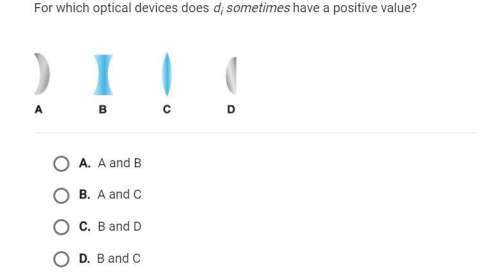
A car of mass m = 1030 kg is traveling down a θ = 13-degree incline. When the car's speed is v0 = 14 m/s, a mechanical failure causes all four of its brakes to lock. The coefficient of kinetic friction between the tires and road is μk = 0.45.
a. Write an expression for the magnitude of the force of kinetic friction
b. Write an expression for the magnitude of the change in the car's height, h, along the y-direction, assuming it travels a distance L down the incline.
c. Calculate the distance the car travels down the hill 1 in meters until it comes to a stop at the end

Answers: 3
Other questions on the subject: Physics

Physics, 22.06.2019 07:00, nanakwameyeb
Abucket full of water weights 4 kg and water well is 10m deep. a girl draws water from the well. it takes the girl 3 minutes to draw a bucket full of water from the well. what is the power of the girl?
Answers: 1

Physics, 22.06.2019 20:20, Webber07
An electron is trapped at a defect in a crystal. the defect may be modeled as a one-dimensional, rigid-walled box of width 1.00 nm. (a) sketch the wavefunctions and probability densities for the n 1 and n 2 states. (b) for the n 1 state, nd the probability of nding the electron between x1 0.15 nm and x2 0.35 nm, where x 0 is the left side of the box. (c) repeat (b) for the n 2 state. (d) calculate the energies in electron volts of the n 1 and n 2 states
Answers: 1

Physics, 22.06.2019 23:00, aliyyahlove
Awelder using a tank of volume 7.50×10^-2 m^3 fills it with oxygen (with a molar mass of 32.0 g/mol ) at a gauge pressure of 3.30×10^5 pa and temperature of 37.1 ∘c. the tank has a small leak, and in time some of the oxygen leaks out. on a day when the temperature is 23.1 ∘c, the gauge pressure of the oxygen in the tank is 2.00×10^5 pa . a) find the initial mass of oxygen. b) find the mass of oxygen that has leaked out.
Answers: 3

Physics, 23.06.2019 03:20, marshaehayes9444
Neutrons are placed in a magnetic field with magnitude 2.30 t. part a part complete what is the energy difference between the states with the nuclear spin angular momentum components parallel and antiparallel to the field? δe δ e = 2.77×10−7 ev previous answers correct part b part complete which state is lower in energy: the one with its spin component parallel to the field or the one with its spin component antiparallel to the field? which state is lower in energy: the one with its spin component parallel to the field or the one with its spin component antiparallel to the field? parallel antiparallel previous answers correct part c part complete how do your results compare with the energy states for a proton in the same field (δe=4.05×10−7ev)? how do your results compare with the energy states for a proton in the same field this result is smaller than but comparable to that found in the example for protons. this result is greater than but comparable to that found in the example for protons. previous answers correct part d the neutrons can make transitions from one of these states to the other by emitting or absorbing a photon with energy equal to the energy difference of the two states. find the frequency of such a photon. f f = mhz previous answersrequest answer incorrect; try again; 5 attempts remaining
Answers: 2
Do you know the correct answer?
A car of mass m = 1030 kg is traveling down a θ = 13-degree incline. When the car's speed is v0 = 14...
Questions in other subjects:

History, 31.10.2020 06:00

Mathematics, 31.10.2020 06:00

Mathematics, 31.10.2020 06:00

Physics, 31.10.2020 06:00

Mathematics, 31.10.2020 06:00


Health, 31.10.2020 06:00



Mathematics, 31.10.2020 06:00






 = 14m/s is the initial velocity of the car when it starts braking, a = -4.3 m/s2 is the deceleration of the car, and
= 14m/s is the initial velocity of the car when it starts braking, a = -4.3 m/s2 is the deceleration of the car, and  is the distance traveled, which we care looking for:
is the distance traveled, which we care looking for:






